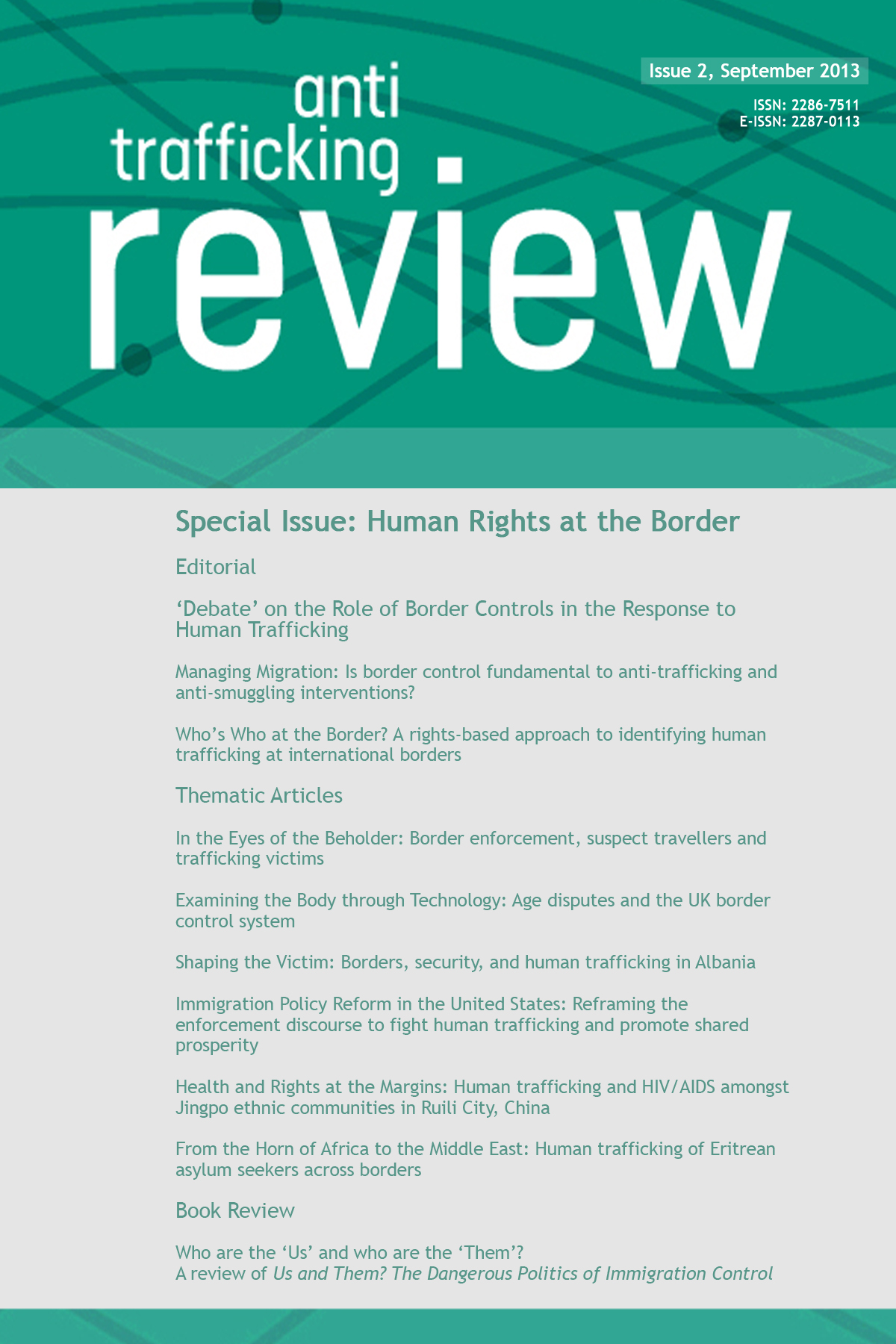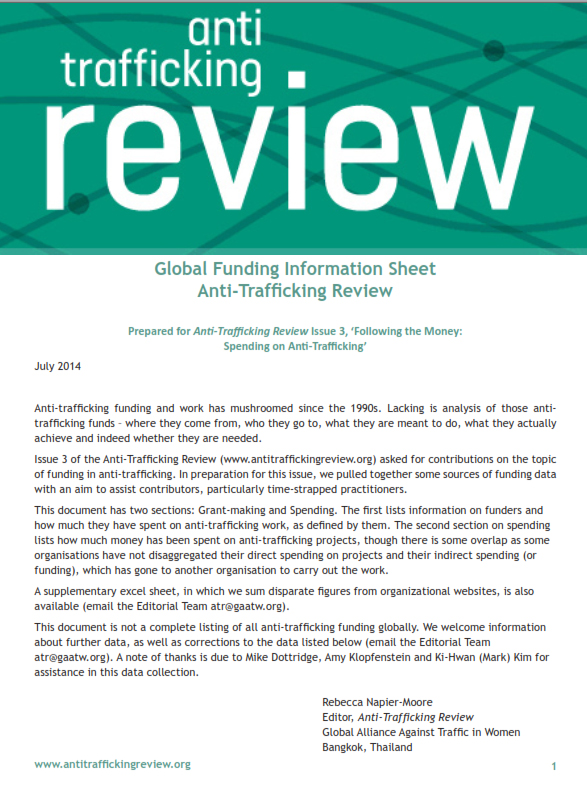|
|
ISSN: 2286-7511 E-ISSN: 2287-0113
The Anti-Trafficking Review is an academic journal that promotes a human rights based approach to anti-trafficking. It explores trafficking in its broader context including gender analyses and intersections with labour and migrant rights. The Review offers an outlet and space for dialogue between academics, practitioners and advocates seeking to communicate new ideas and findings to those working for and with trafficked persons. Each issue relates to an emerging or overlooked theme in the field of human trafficking. The Review presents rigorously considered, peer reviewed material in clear English. The journal is open access with a readership in over 100 countries. The Review is published by GAATW. Opinions expressed in articles and reviews in the Anti-Trafficking Review are the views of the authors, and not those of the editorial team, the publisher or the Editorial Board. To download the articles, please visit: www.antitraffickingreview.org 2017 No 8 (2017): Where's the Evidence? This issue of the Anti-Trafficking Review explores the role of evidence, research and data in anti-trafficking work and how they influence our understanding of the issue and responses to it. Contributors examine the evidence used—or rejected—in the formation of national anti-trafficking policies in Northern Ireland, Canada and India, as well as the role of statistics, and monitoring and evaluation of anti-trafficking interventions. In the debate section, four authors take turn defending or rejecting the proposition 'Global Trafficking Prevalence Data Advances the Fight against Trafficking in Persons'. Download the full issue in pdf. 2016 No 7 (2016): Trafficking Representations Contributions in this issue examine visual material and narratives through which trafficking and its victims are represented in film, TV, newspapers and public discourse. The articles investigate representations in Australia, Cambodia, Nigeria, Serbia, Denmark, UK, and USA. Ultimately, this special issue highlights the fact that stereotypical trafficking representations conveniently distract the global public from their increasing and shared day-to-day exploitability as workers because of the systematic erosion of labour rights globally. Crucially, the issue also discusses positive alternatives and how to represent trafficking differently. Download the full issue in pdf No 6 (2016): Prosecuting Human Trafficking Issue 6 of the Anti-Trafficking Review analyses human trafficking prosecutions in different regions of the world and from a range of different perspectives. With five themed articles focusing on Russia, the United States, the Balkans and Western Europe, the issue provides important insights into the practical and policy issues surrounding human trafficking prosecutions. Download the full issue in pdf 2015 No 5 (2015): Forced Labour and Human Trafficking Download the full issue in pdf No 4 (2015): Fifteen Years of the UN Trafficking Protocol Download the full issue in pdf 2014 Trafficked persons do not always benefit from money flows aimed in their direction, or indeed may suffer as a result of anti-trafficking spending. In addition, politics behind anti-trafficking money abound, and recipient organisations wonder whether they should take ‘tied’ funds or funds with ideological, geographical or other restrictions. In recent years governments have rushed to spend money on a range of poorly designed initiatives in the hope of avoiding or moving out of a low ranking in the US government's yearly Trafficking in Persons Report. Download the full issue in pdf 2013 The latest issue of the Anti-Trafficking Review includes eight peer-reviewed articles on how anti-trafficking measures play out in border zones. Download the full issue in pdf 2012 Download the full issue in pdf
|
|
|
Global Funding Information Sheet Anti-trafficking funding and work has mushroomed since the 1990s. Lacking is analysis of those antitrafficking funds – where they come from, who they go to, what they are meant to do, what they actually achieve and indeed whether they are needed. Issue 3 of the Anti-Trafficking Review (www.antitraffickingreview.org) asked for contributions on the topic of funding in anti-trafficking. In preparation for this issue, we pulled together some sources of funding data with an aim to assist contributors, particularly time-strapped practitioners. This document has two sections: Grant-making and Spending. The first lists information on funders and how much they have spent on anti-trafficking work, as defined by them. The second section on spending lists how much money has been spent on anti-trafficking projects, though there is some overlap as some organisations have not disaggregated their direct spending on projects and their indirect spending (or funding), which has gone to another organisation to carry out the work. A supplementary excel sheet, in which we sum disparate figures from organizational websites, is also available (email the Editorial Team This email address is being protected from spambots. You need JavaScript enabled to view it.). This document is not a complete listing of all anti-trafficking funding globally. We welcome information about further data, as well as corrections to the data listed below (email the Editorial Team This email address is being protected from spambots. You need JavaScript enabled to view it.). A note of thanks is due to Mike Dottridge, Amy Klopfenstein and Ki-Hwan (Mark) Kim for assistance in this data collection. Click here to download the information sheet. |



